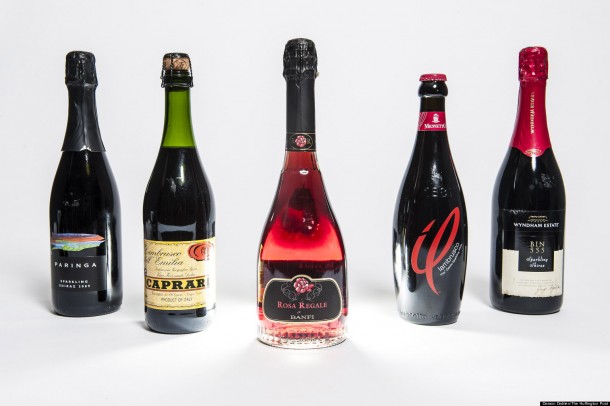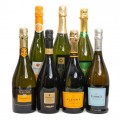The Puttonyo . . . by Joel Mann, Staff Wine (And Beer) Tasting Guy

Many people tend to shun dessert wines as they’re usually intensely sweet and often forbiddingly expensive. A well made dessert wine is truly an otherworldly experience though. Yes, they’re exceptionally sweet, but surprisingly never cloying. A good dessert wine has an equally concentrated acidity that offsets the sugariness, making it light and refreshing. And the strong aromas and flavors of many dessert wines are just heavenly to any hardcore foodie.
Plus, the cold winter months are often the best time to splurge a little on the higher price and enjoy such a treat. This month, I wanted to delve a little deeper into what many consider the king of dessert wines – Tokaji. This Hungarian specialty has a rich and noble history, not to mention a flavor to die for.
Tokaji wines come from the Tokaj-Hegyalja region of Hungary in the northeast portion of the country. Some of the vineyard region also spills over into southeast Slovakia courtesy of borders from the Treaty of Trianon following WWI, which produces the similarly named Tokajské. The boundaries of the wine region were established by the decree of Emperor Charles VI in 1737. The area is a low foothill region (Hegyalja means foothills in Hungarian) at the base of the Zemplén Mountains that sits around the confluence of the Bodrog and Tizsa Rivers. The soils are mostly clay and loess with volcanic subsoils.
History records viticulture coming to the area as early as the 12th century, but there is divided opinion as to whether earlier grape production took place. Some experts believe grape growing in the region may date back as far as the Central European Celtic Era. There is even debate about the origins of the name Tokaj with some believing it stems from the Slavic word Stokaj, which roughly translates to confluence, while others believe it to be the Armenian word for grape (which names the area “grape foothills” in modern translation).
Modern viticulture in the area focuses around six grape varieties: Furmint, Hárslevelû, Yellow Muscat, Zéta, Kövérszõlõ, and Kabar, with the first two being the most important and accounting for over 90% of production. The region promotes frequent growth of botrytis mold, which is key to the character and flavor of Tokaji wines.
Several different styles of wine are made in the region, but the two of note for dessert wines are called Aszú and Essencia. Aszú is the most commonly understood style that people refer to when discussing Tokaji. It’s produced by hand selecting the dried, shriveled berries covered in botrytis from the vineyard. Those grapes are smashed into a paste consistency (called a dough) and grape must is poured over the paste, stirred occasionally, and allowed to marry for a period of time.
The must is then racked off the grape solids into casks or vats and slowly fermented and matured over time. The high sugar concentrations often result in very slow fermentations, which can sometimes take several years, and large amounts of residual sugar often remain after fermentation is deemed complete. Traditionally, the grapes were picked into small wooden baskets called puttony that harvesters wore on their backs. Wines were graded to a level of sweetness depending on how many puttonyos were used to make the dough. That grading tradition carries over today with wines receiving a puttonyo scale of 1-6 based on the concentration of sugar in the finished wine.
The second style is Essencia. This is one of the rarest styles of wine in the world, and accordingly fetches a rare price. Essencia is made by collecting the run-off juice of the Aszú berries that escapes prior to Aszú grapes being mashed into the dough. That run-off juice is then fermented into wine. Sugar concentrations are extreme, fermentation is typically on the order of several years, and alcohol levels rarely exceed 5%-6% ABV. Essencia wines are highly prized, very intense, and extremely long-lived in aging and storage.
The flavors of Tokaji wines are often the honey and honeysuckle notes that come from botrytized grapes, as well as a range of dried fruit (apricot and orange being common), caramel, toffee, and certain spice characters such as vanilla. The flavors and aromas are typically powerful, and the wine is often served as a stand-alone dessert by itself, especially for higher puttonyos or Essencia styles. A few producers of note are Szepsy, Árvey, Dobogó, and Disznókõ. I highly recommend trying a few Tokaji to broaden your wine experiences as they are well worth the price. And as the Hungarians say, egészségedre!
Drink responsibly.





